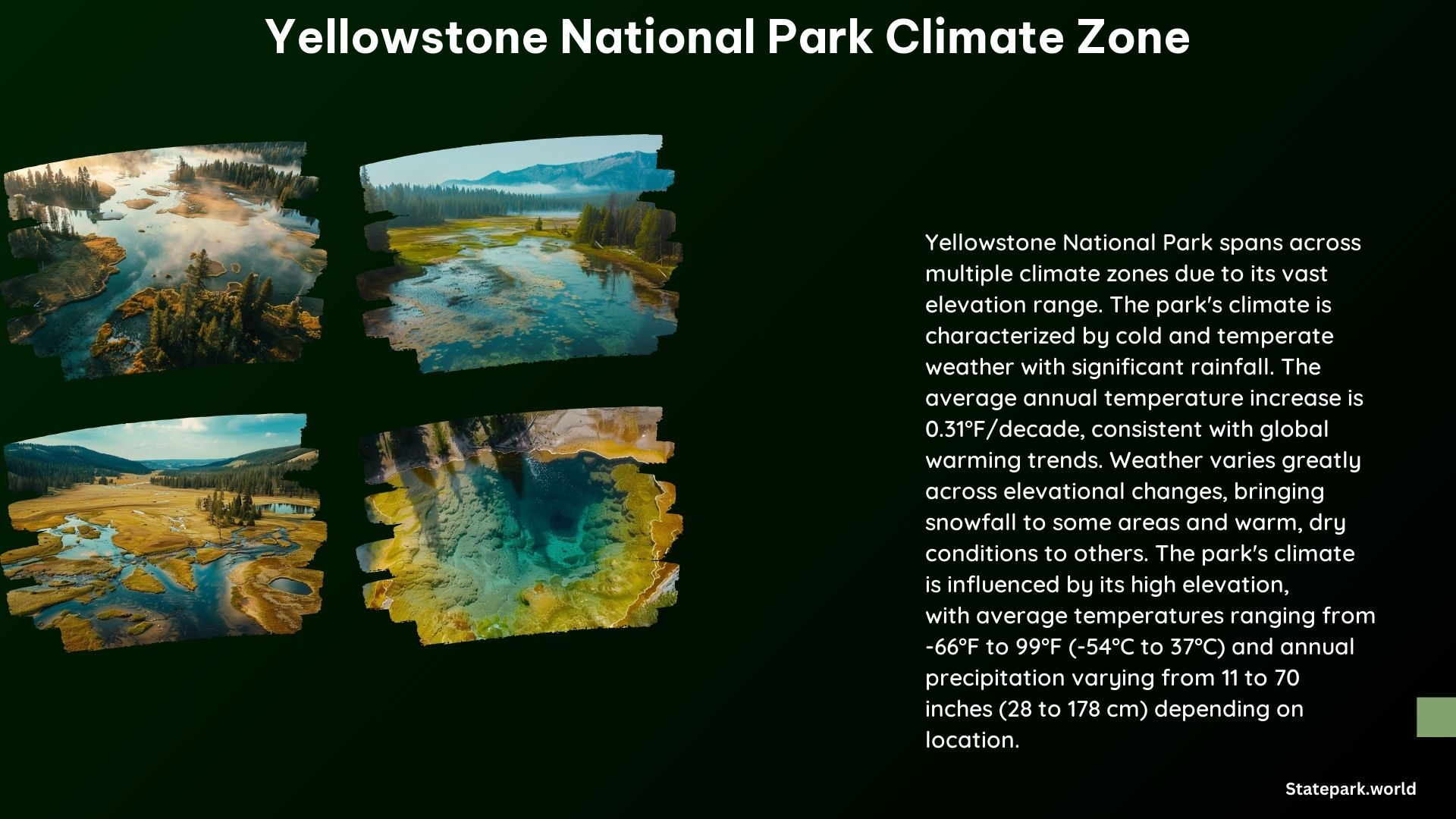Yellowstone National Park, located in the western United States, is renowned for its stunning natural beauty and diverse ecosystems. However, the park’s climate is equally fascinating, with a range of weather conditions that can vary significantly throughout the year. In this blog post, we’ll delve into the intricacies of Yellowstone’s climate zones and explore how they impact the park’s unique environment.
Yellowstone National Park’s Climate Zones
Yellowstone National Park lies within the Greater Yellowstone Ecosystem (GYE), which covers approximately 58,000 square miles and includes 14 mountain ranges. The park’s climate is heavily influenced by its high elevation, with an average elevation of around 8,000 feet. This results in a mix of cold and temperate weather conditions, with significant rainfall and snowfall throughout the year.
Typical Weather Conditions

Yellowstone’s weather is known for its unpredictability, with significant temperature swings and the possibility of rain or snow during any month. Here’s a breakdown of the typical weather conditions in the park:
Winter
Temperatures during the winter months range from 0°F to 20°F (-18°C to -7°C) during the day, with sub-zero temperatures common at night and at higher elevations. The record low temperature was -66°F (-54°C) on February 9, 1933.
Spring and Fall
Daytime temperatures in the spring and fall typically range from 30°F to 60°F (0°C to 20°C), with overnight lows in the teens to single digits (-5°C to -20°C). Snow is a common occurrence during these seasons, with regular accumulations of 12 inches (30.5 cm) in a 24-hour period.
Summer
Summertime in Yellowstone is generally mild, with daytime temperatures around 70°F (21°C) and occasionally reaching 80°F (27°C) at lower elevations. Nights are usually cool, and temperatures may drop below freezing at higher elevations. Thunderstorms are a common occurrence in the afternoons.
Precipitation Patterns
Precipitation in Yellowstone varies greatly depending on elevation and location. The average annual precipitation ranges from 11 inches at Gardiner, Montana, to about 38 inches at Bechler River in the park’s southwest corner. Higher elevations receive significantly more precipitation, with some areas receiving over 70 inches of snowfall annually.
Impact of Climate Change
Climate change is having a significant impact on Yellowstone’s climate, with rising temperatures and changes in precipitation patterns. This is leading to a decline in snowpack, altered stream flow, and changes in the growing season. Researchers have reported an increase of 0.31°F per decade in annual average temperatures within the GYE, consistent with the global trend.
Climate Change and White Bark Pine
One of the most notable impacts of climate change in Yellowstone is on the white bark pine. Warmer temperatures and changes in precipitation patterns are making it more difficult for the white bark pine to thrive. Researchers are studying the effects of climate change on the white bark pine to better understand and mitigate its impacts.
Visiting Yellowstone
When planning a visit to Yellowstone, it’s essential to be prepared for the unpredictable weather. Bring warm clothing, rain gear, and layers to adapt to the changing conditions. Check the park’s website for current weather forecasts and plan accordingly to make the most of your Yellowstone adventure.
References
- National Park Service. (2023). Changes in Yellowstone Climate. Retrieved from https://www.nps.gov/yell/learn/nature/changes-in-yellowstone-climate.htm
- Climate-Data.org. (n.d.). Yellowstone National Park. Retrieved from https://en.climate-data.org/north-america/united-states-of-america/yellowstone-national-park-10283/
- Yellowstone History. (n.d.). YELLOWSTONE’S CLIMATE AND WEATHER. Retrieved from https://yellowstone.net/history/125th-anniversary-press-releases/yellowstones-climate-and-weather
- National Park Service. (2023). Weather. Retrieved from https://www.nps.gov/yell/planyourvisit/weather.htm
- Yellowstone.org. (n.d.). Yellowstone Weather. Retrieved from https://www.yellowstone.org/experience/visitor-information/yellowstone-weather/.
